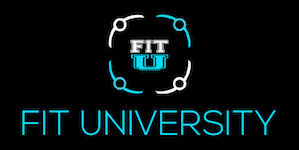Remember the food pyramid from elementary school? Here’s a refresher if ya don’t…
This month marks the fifth anniversary of “MyPlate,” an updated model of healthy eating that First Lady Michelle Obama and the United States Department of Agriculture (USDA) rolled out in 2011 to replace the infamous pyramid.
I recently finished studying abroad in the United Kingdom, where I had the opportunity to try everything from traditional English fare (fish and chips, bangers and mash) to other international cuisines (Middle Eastern and Turkish for example). While overseas and getting to taste all this delicious food, I started to wonder about the Brits’ ideas about nutrition and how the recommendations for healthy eating across the pond differed from those we have in the US.
As of last March, the UK’s Department of Health uses the Eatwell Guide.
UK’s Eatwell Guide
While both pictorial guides use a circular outline (i.e., a plate), the concepts are different.
- Eatwell is an actual pie chart, while MyPlate sections food groups to replicate the way people use an actual plate.
- Eatwell contains example pictures of each food group; MyPlate has simplified the main image to include just labels. There are arguably some advantages to showing people the kinds of foods that fall into each category, without the extra clicking you have to go through to find this information on ChooseMyPlate.gov. For example, the pink protein slice of EatWell includes chickpeas, lentils and nuts. Pictured next to chicken and fish, these less-traditional sources of protein may inspire people to try other healthy (especially vegetarian) options.
- Eatwell compares actual food groups by combining fruit and vegetables while adding a sliver for “oil and spreads.” The equivalent section for “grains” in MyPlate becomes “potatoes, bread, rice, pasta and other starchy carbohydrates” for Eatwell. This allows room for carb sources besides grains.
- Another big difference is the addition of water and snacks. The UK guide includes these parts of a healthy diet apart from the main circle. The US plate makes no mention of these types of food. By including “junk” foods like ice cream and chips, Eatwell acknowledges that they are a balanced part of a healthy diet, and everyone eats them at least to some extent. Not that they’re advising you always eat these foods: Small text advises the viewer to “Eat less often and in small amounts.”
- The upper left corner of the guide contains a brief explanation of nutrition labels on packaged foods. In the US, the Food and Drug Administration (FDA) recently updated their nutrition labels. See this article for more details.
Differences aside, both MyPlate and Eatwell are essential for teaching kids about a healthy diet, and hopefully are effective tools for the US and UK governments to promote healthy eating. A healthy nation is a happy nation! And there’s no doubting that both countries still have a long way to go.
A recently published study from the Journal of the American Medical Association (JAMA) reported that in the US in 2014, 40.4% of men and 35% of women were considered obese. In England, the percentage is likewise increasing, but not the same extreme: 25.6% of adults were obese as of 2014. The continued rise of obesity in both countries is alarming and again underscores the need for better education on how to have a varied and nutritious diet.
You can find out more about MyPlate on their social media pages, listed below. I recommend checking it out; their Pinterest page is full of healthy recipes to try!
Sources
- http://www.choosemyplate.gov/
- https://www.washingtonpost.com/national/usda-replaces-food-pyramid-with-myplate-in-hopes-to-promote-healthier-eating/2011/06/02/AGRE16HH_story.html
- http://www.nhs.uk/Livewell/Goodfood/Pages/the-eatwell-guide.aspx
- http://www.nbcnews.com/health/health-news/america-s-obesity-epidemic-hits-new-high-n587251
- https://www.noo.org.uk/NOO_about_obesity/adult_obesity/UK_prevalence_and_trends
